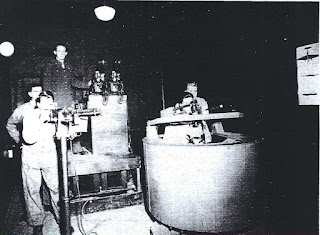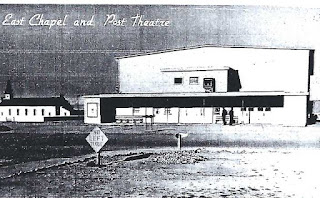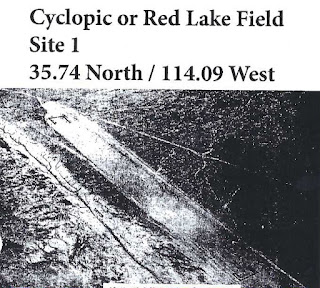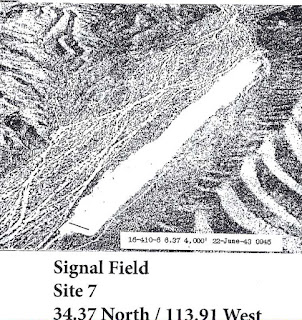One of my regrets in moving to Kingman is we arrived too late to tour the museum at the airport that memorialized the Army Air Field. It closed like a year before we moved here. I went looking for it and found the hangar it had been in, but it was empty.
I found a binder with information on the Army airfield at the Kingman Library. This is marked reference so you cannot check it out. However they allowed me to make a copy. It is either in the Arizona section or in the reference section. It seems to move back and forth. It was compiled by Bob Chilcoat in 2017.
The Kingman Army Airfield was born out of WWII. There was such a need for an air training location that worker were diverted from the Davis Dam project to finish the airfields. The air field was set up to teach gunnery for the B-17. It was the sixth such school, and the largest. The major portion was what would later become the Kingman Airport.
The school was first called Flexible Gunnery School at Kingman. However as of May 1943 the name was changed to Kingman Army Air Field. The school was activated August 1942 and the first class was in January of 1943. The classes were progressive, starting with bb gun shooting, then skeet shooting, and finally air to air shooting. It would be inactivated at the end of the war, summer of 1945, and closed Feb. 25, 1946. 36,000 gunners were trained.
The base included all the things you would see in a small community: library, post office, chapel, movie theater, stage with base orchestra and regular dances, day room, large cafeteria, hospital, etc. The base hosted many celebrities including Bob Hope and his troupe. Also the Three Stooges visited.
There were actual seven sub bases to KAAF. This includes the main base in Kingman, the ground to ground range also in Kingman, Red Lake Field, Antares or Hackberry, Yucca, Topock, Signal and Lake Havasu. Lake Havasu was often used as a place for soldiers to recreate in Lake Havasu.
Subsequent to this the base was converted to Storage Depot 41. Word was received in September of 1945 of the change, and the first plane was received on October 19, 1945. Planes from all over the world were no longer needed and many were flown to Kingman for storage or disposal. By the end of the year there were almost 5000 aircraft in Kingman. The highest total officially would be about 5500, however many have said there were 7000 aircraft, the highest total in the world to that point. Mostly these were large bombers, but there were other aircraft as well. Some were pot marked with shrapnel and barely flyable. However there were no accidents in bringing the aircraft to Kingman.
I most enjoyed in this collection, the article from the Arizona Highways magazine. Here they described the final resting place and salvage of the aircraft, some of which was very important to those who flew in them. A few were rescued, like Enola Gay that dropped the atomic bomb. It is now in a museum.
This collection also has plenty of pictures. I share a few but there are many more in the binder.
 |
| skeet shooting while moving |
 |
| Kingman Storage Facility |
 |
| A training devices using movies |
 |
| oxygen room, gives the fell of being at 30,000 feet |
 |
| chapel |
 |
| Bob Hope and crew |






















No comments:
Post a Comment